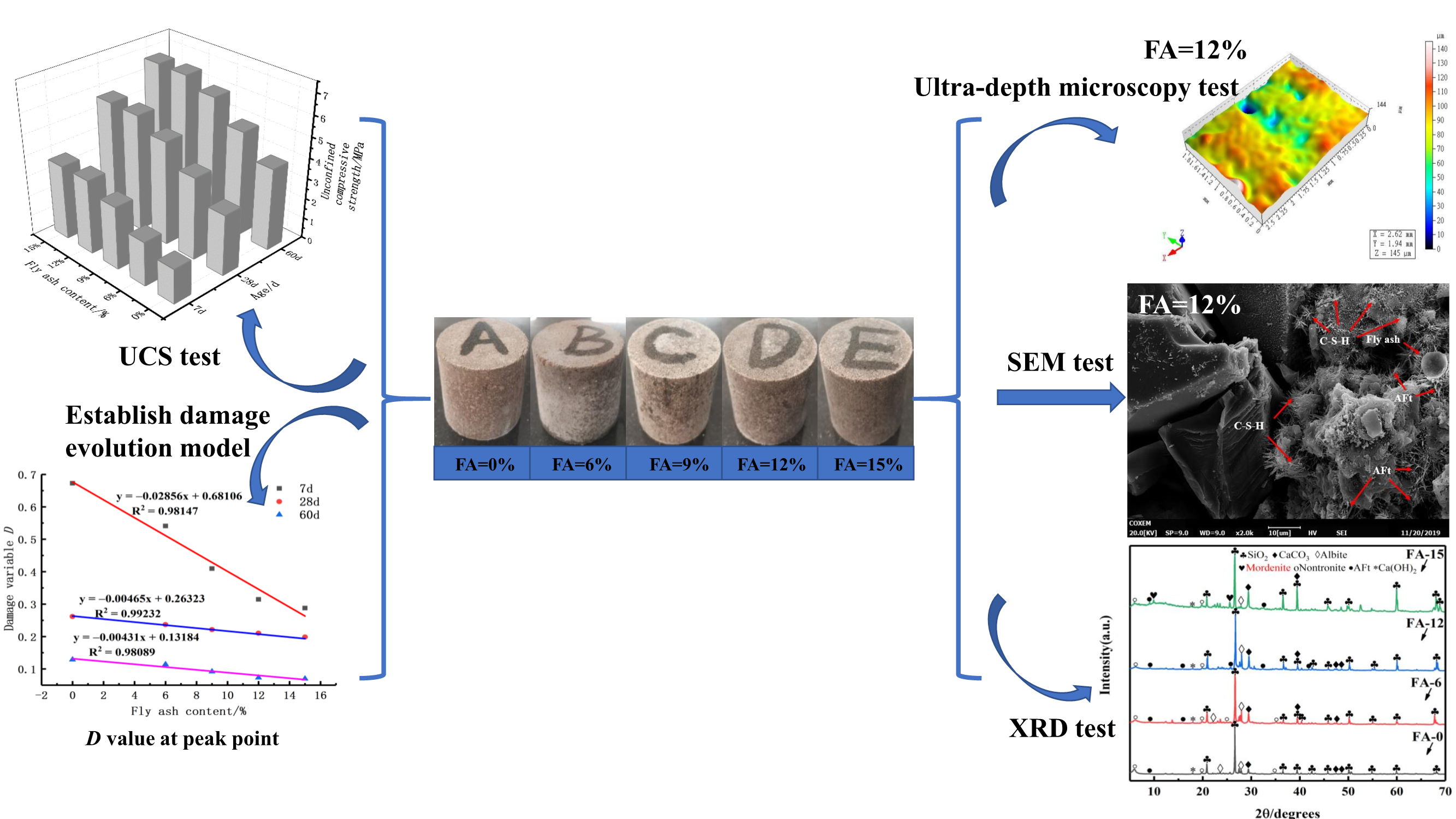 Open Access
Open Access
ARTICLE
A Study of the Structural Evolution and Strength Damage Mechanisms of Pisha-Sandstone Cement Soil Modified with Fly Ash
College of Water Conservancy and Civil Engineering, Inner Mongolia Agricultural University, Hohhot, 010018, China
* Corresponding Author: Xiaoli Li. Email:
Journal of Renewable Materials 2021, 9(12), 2241-2260. https://doi.org/10.32604/jrm.2021.015565
Received 27 December 2020; Accepted 15 March 2021; Issue published 22 June 2021
Abstract
In the present study, in order to investigate the effects of fly ash on the structural evolution and strength damage mechanism of Pisha-sandstone cement soil, unconfined compressive strength tests of Pisha-sandstone cement soil with different fly ash content levels and various ages were carried out. The apparent morphology, microstructures, and chemical compositions of the samples were observed and analyzed using ultra-depth three-dimensional microscopy, scanning electron microscopy, and XRD methods. The results revealed that the unconfined compressive strength levels of Pisha-sandstone cement soil samples displayed increasing trends with the increases in fly ash content and age. For example, when the fly ash content levels were increased from 12% to 15%, the strength of Pisha-sandstone cement soil had only slightly increased under the curing ages of 7, 28, and 60 days. In addition, the unconfined compressive strength levels of the samples with 15% fly ash content only increased 0.02%, 0.51%, and 0.54%, respectively, when compared with the samples containing 12% fly ash. It was observed that with the increases in the fly ash content, the number of pores on the outer surfaces of the samples were significantly reduced. Also, the height differences of cross-sectional gullies were reduced, and the apparent morphology was observed to be flatter. Since cement hydration creates a strong alkaline environment for reaction systems, the active degrees of the pozzolanic reactions of the fly ash were stimulated in this study. Moreover, a significant amount of the C-S-H gel phase and the stable five-membered ring structure of the mordenite and ettringite were generated, which connected the loose Pisha-sandstone particles to form a skeleton. The internal microstructures were then observed to be denser and more uniform. At the same time, the micro-pores were filled and refined by the unreacted micro-bead fly ash. Consequently, the defects in the internal microstructures were improved. Also, based on the Weibull distribution, a damage evolution model of the Pisha-sandstone cement soil was established. The analysis results of the damage variable D values during the initial damage stage, damage evolution stage, and residual damage stage of the damage process showed that the damage variables during all three stages displayed decreasing trends with the increases in the fly ash content levels and age. Therefore, based on this study’s findings, it was considered that the incorporation of fly ash could effectively improve the damage degrees of Pisha-sandstone cement soil under external force conditions.Graphic Abstract

Keywords
Cite This Article
Citations
 Copyright © 2021 The Author(s). Published by Tech Science Press.
Copyright © 2021 The Author(s). Published by Tech Science Press.This work is licensed under a Creative Commons Attribution 4.0 International License , which permits unrestricted use, distribution, and reproduction in any medium, provided the original work is properly cited.


 Submit a Paper
Submit a Paper Propose a Special lssue
Propose a Special lssue View Full Text
View Full Text Download PDF
Download PDF

 Downloads
Downloads
 Citation Tools
Citation Tools